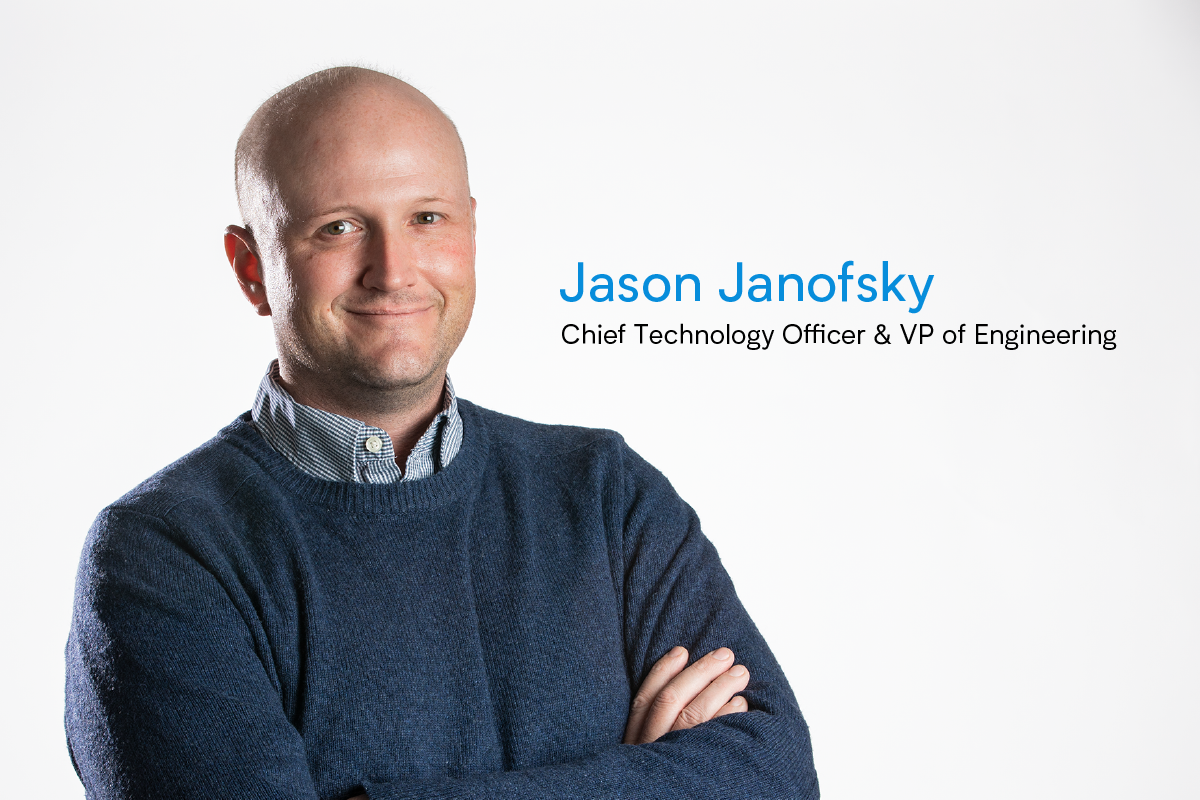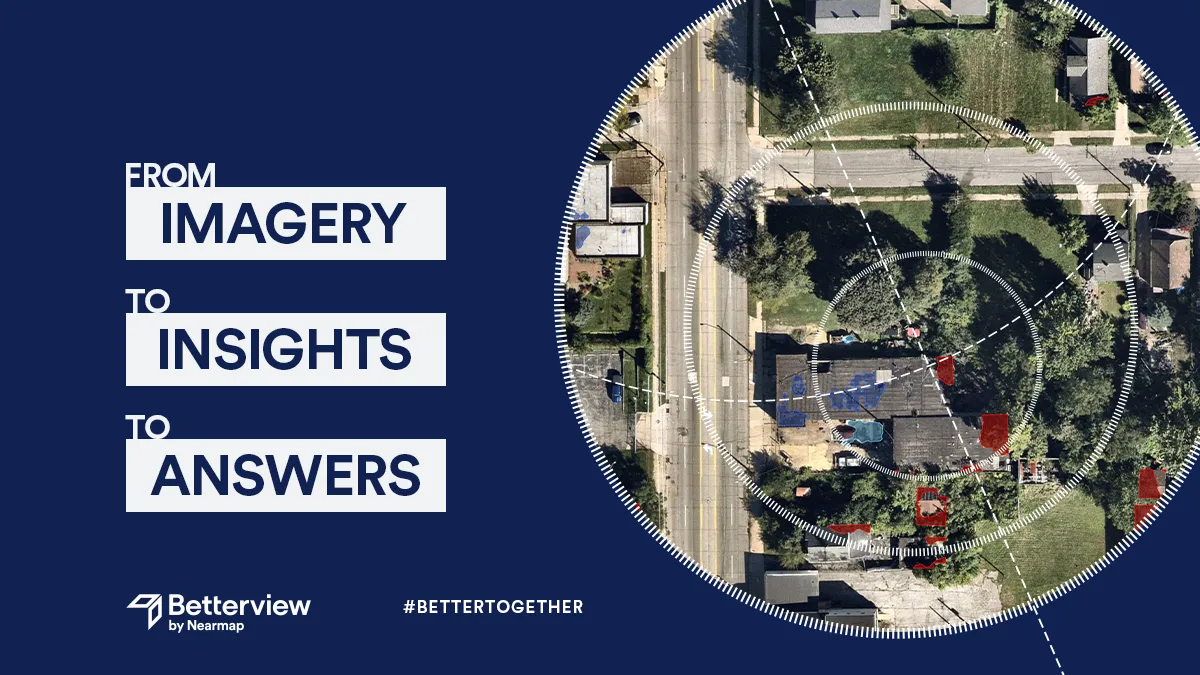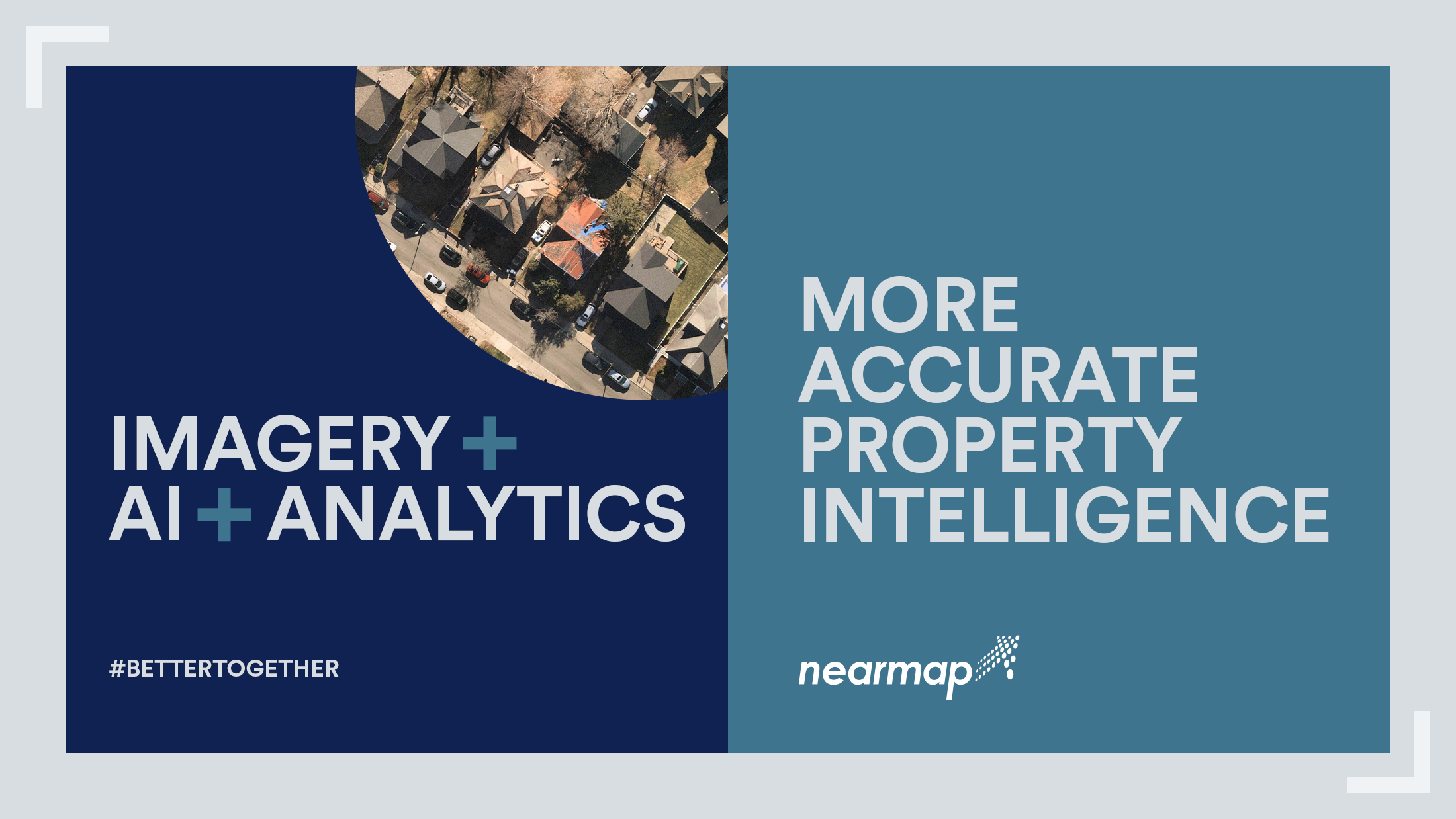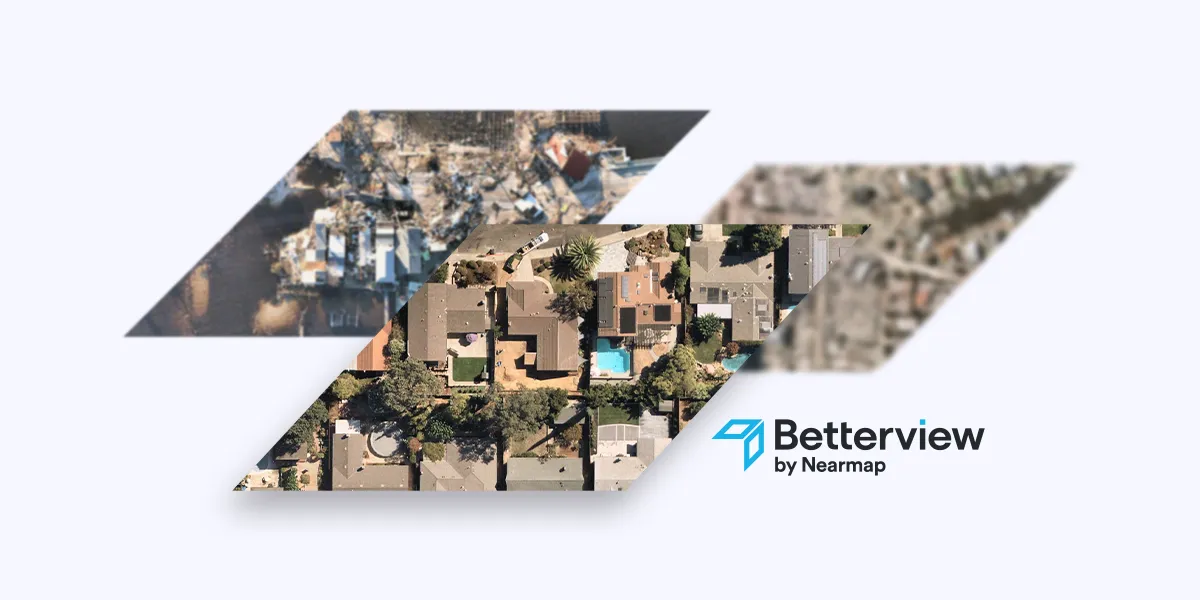From Imagery to Insights to Answers
What does the Nearmap acquisition of Betterview mean for the insurance industry?
3 min read
.png) Jason Janofsky
:
Dec 1, 2022 8:00:00 AM
Jason Janofsky
:
Dec 1, 2022 8:00:00 AM

Betterview's customers all have one thing in common: they want highly accurate data as quickly and cost-effectively as possible. Unfortunately, these three factors of accuracy, speed, and cost often represent direct tradeoffs where improvement on one factor comes at the expense of another. However, through significant investments in engineering and our exceptional team's persistent efforts, Betterview has continually made simultaneous improvements across all three factors. The result is that Betterview now has the most accurate aerial imagery machine vision analysis in the market, delivered at lightning-fast speeds at a highly competitive price.
Betterview has always made data accuracy and transparency its top priority since inaccurate and unexplainable data is not valuable no matter how fast or cheap it is. We believe that if we focus first and foremost on accuracy, we can always work out performance and cost improvements over time. With this philosophy in mind, Betterview made the early decision to process on-demand and show the computer vision detections to our end users. With on-demand processing, we pull imagery and run it through our newest predictors the moment it is requested. While this process is highly accurate, it has historically taken significant time – until now. Betterview can now process properties of up to a few acres in as little as two and a half seconds, with a median time of 3 seconds and 90% of properties returning in 4 seconds.
With on-demand processing, we can:
Unfortunately, these on-demand benefits came with a significant downside: a compromise on speed. Several years ago, running a single-family home took Betterview's system up to 25 seconds. This amount of time was cumbersome for users in the Betterview UI and was too slow to meet the needs of rapid quoting.
The other option was to preprocess imagery as it became available and store the results in a database for future retrieval. This method would undoubtedly give faster response times to our customers, but it came with a significant tradeoff. Once the entire coverage zone of millions of properties and their contained structures had been processed and stored, going back and adding a feature, however big or small, would require a considerable investment of processing time and cost to re-run all that imagery. This approach puts a significant deductible on improvements to the software platform and machine vision classifiers. If we switched to a preprocessing model, we would incentivize ourselves to stagnate; this is was also not viable in the long-term for Betterview.
We needed the best of both worlds — the ability to consistently improve the system and platform while providing the performance required for modern insurance workflows. To get there, we had to improve weak parts of our process day-by-day, not take anything for granted, and slowly whittle away at slow points in our processing.
Here are some of the features we have built to get the speed needed to meet customer demand:
When we first deployed the metrics system mentioned in 2020, we started working on inefficiencies that were slowing us down by seconds. Slowly, we looked at ways to save under one second, then under 500 milliseconds. Today, we continue to shave off tens of milliseconds, but, at around 2-3 seconds, we are now as fast as many providers of database stored data can serve up responses.
Today, Betterview can easily handle a quoting workflow with on-demand processing due to the work our team has put in to push the boundaries of what is possible with highly parallelized systems. To learn more about how our product team empowers insurers to better manage risk, schedule a demo today.

What does the Nearmap acquisition of Betterview mean for the insurance industry?

The insurance industry, and the technology that supports it, have seen significant change over the last few years. New technology continues to come...

What are the key trends challenging P&C insurers in 2024?